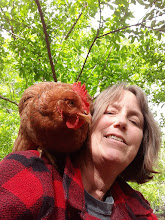Read aloud the following book: DK Water Hole 24 hours ISBN: 0756611261
Read One Small Square-African Savanna pages: 10-23 this can be spread out through the week or choose selections from each page. This isn't as much reading as it sounds since there are many pictures and sidebar notes. This goes along well with the DK book.
This week we'll decorate the inside of our Savanna Lapbook
Inside left side glue some blue paper or foil, first cut it into an oval shape, to represent the water hole. There are two choices here. Either glue three sides so that the water hole forms a pocket to hold animal cards.or Glue the whole thing down and decorate the page with animal cards.
Print out Savanna animal cards from page 156 of the Giant Science Resource Book. These can be cut out and put into the water hole pocket or used to decorate around the water hole. feel free to find other African Savanna animal graphics around the web to add to this page.
Inside right of file folder will be a pocket. Use either safari print paper or decorate a sheet of construction paper in an animal print. For instance draw black stripes on a piece of white paper for a zebra print. Draw black spots or stripes on a tan sheet of paper for a big cat print. This will be cut to take up about half the page and form a pocket. Glue three sides and leave the top unglued so it an have papers put in it. For young kids a good way to phrase this is to "glue a smile" onto the bottom and sides of the paper. If you put glue on the top it's not a smile! Leave this to dry while you work on animal research.
Print out the Venn Diagram from page 293 of the Giant Science resource book.
Write house cat in the top circle.
Write Big cat in the bottom circle.
Write Both in the middle where the circles join.
Brainstorm with child/ren things which are alike and different about house cats and big African cats such as lions and tigers. Possible answers are House cat-live in a house, eats packaged cat food, is tame, Possible answers for Big cats are lives in the wild in Africa, roars, eats prey. For Both: Have fur, meow.
For the research pocket you've just made many animal fact sheets could be printed out. Over the last two weeks in my class we've had giraffe, African elephant and Redbilled Oxpecker. We''ll add a couple more next week. You can add many more sheets about animals since you'll have more time at home. I printed out the animal sheets from http://www.enchantedlearning.com/.
Discuss the Redbilled Oxpecker and the Elephant together. Explain that the bird spends most of it's time on large mammals such as the elephant. Its habitat is perched on the mammals! The oxpecker eats fleas, ticks and pesky flying insects and this helps the mammal. These animals benefit from living together and that means they are symbionts.
Print out an outline map of Africa. Look in the back on the One Small square book. Color in the Savanna area of Africa in green. Color in the specific area represented in the book in yellow. There is a picture of this in the back of the book.
Store all info papers, venn diagram and map in the safari print pocket.
Is your grass from last week growing yet? If it's getting tall try cutting some and see how it grows again. When the animals eat grass it grows again and again until the rainy season has passed. When there is no rain for long periods the grass will all be eaten and won't be able to grow back until the rains come again. If you forget to water your grass for too long you will see the dry season arrive.
Older kids are families with extra time try the experiment in the sidebar on page 22 of one Small Square.
One more week of the Savanna and then we'll move on to the Woods Habitat.
Friday, September 26, 2008
Subscribe to:
Post Comments (Atom)

No comments:
Post a Comment